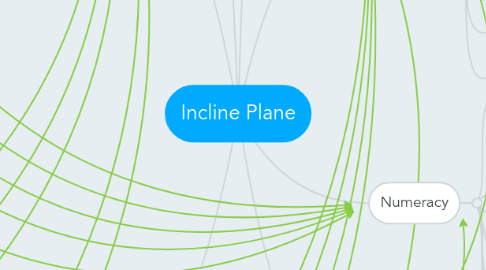Incline Plane
by Amanda Bevan

1. Assessments
1.1. Assessments are necessary to gauge student's current ability and challenge them appropriately
1.2. Formative and summative methods of assessment
2. ACARA (ACARA, 2016)
2.1. Use direct and indirect comparisons to decide which is longer, heavier or holds more, and explain reasoning in everyday language (ACMMG006)
2.2. Sort, describe and name familiar two-dimensional shapes and three-dimensional objects in the environment (ACMMG009)
2.3. Compare, order and make correspondences between collections, initially to 20, and explain reasoning (ACMNA289)
2.4. Answer yes/no questions to collect information and make simple inferences (ACMSP011)
2.5. Sort and classify familiar objects and explain the basis for these classifications. Copy, continue and create patterns with objects and drawings (ACMNA005)
2.6. Aims
2.7. The Australian Curriculum: Technologies aims to develop the knowledge, understanding and skills to ensure that, individually and collaboratively, students:
2.8. investigate, design, plan, manage, create and evaluate solutions
2.9. are creative, innovative and enterprising when using traditional, contemporary and emerging technologies, and understand how technologies have developed over time
2.10. make informed and ethical decisions about the role, impact and use of technologies in the economy, environment and society for a sustainable future
2.11. engage confidently with and responsibly select and manipulate appropriate technologies − materials, data, systems, components, tools and equipment − when designing and creating solutions
2.12. critique, analyse and evaluate problems, needs or opportunities to identify and create solutions.
2.13. Identify some familiar texts and the contexts in which they are used (ACELY1645)
2.14. Listen to and respond orally to texts and to the communication of others in informal and structured classroom situations (ACELY1646)
2.15. Use interaction skills including listening while others speak, using appropriate voice levels, articulation and body language, gestures and eye contact (ACELY1784)
2.16. Use comprehension strategies to understand and discuss texts listened to, viewed or read independently (ACELY1650)
3. Technologies
3.1. Technologies encompasses most of what we see in our world. Objects we use today were made with purpose and therefore designed by technological thinking
4. Literacy
4.1. Literacies, specifically terminology and communication will be used and explored through technological exploration
4.2. Responding to and asking questions
4.3. Explaining creations
4.4. storytelling
4.5. Documenting data
4.6. Reading instructions or design briefs (minimal at this age)
5. Numeracy
5.1. Student's will explore a range of mathematical concepts through technologies.
5.2. Making lines
5.3. Comparing
5.4. Angles: of inclines
5.5. Counting
5.6. Measuring: distance, speed, ramps
5.7. Data collection
5.8. Number work
5.9. Patterning: perhaps of results
6. Computational thinking
6.1. This is a key thought process and key to success in areas such as design technology. It is a method of problem solving, it consists of decomposing the problem and strategising to fix it (Fleer,2016).
7. Tinkering
7.1. Tinkering also known as a form of play is a way of investigating properties and functions. It is instrumental in technology and discovering how things work.


